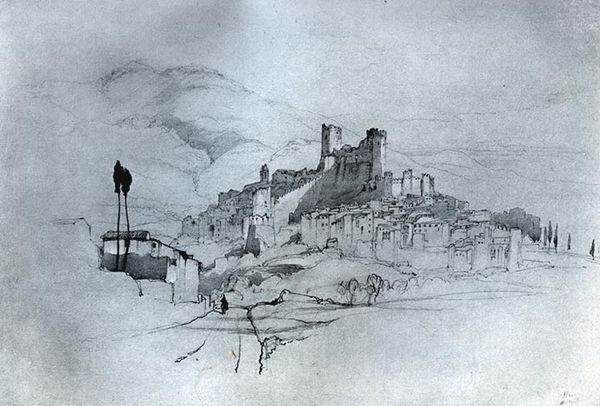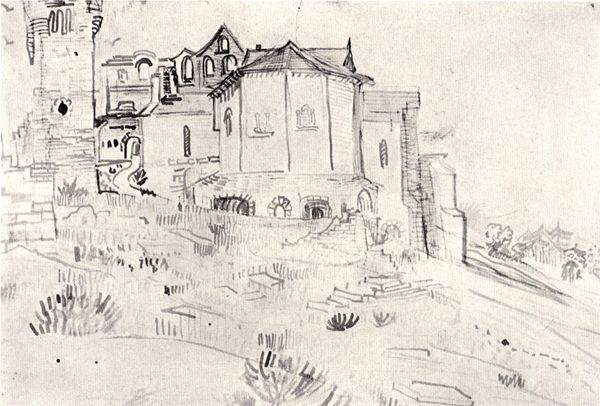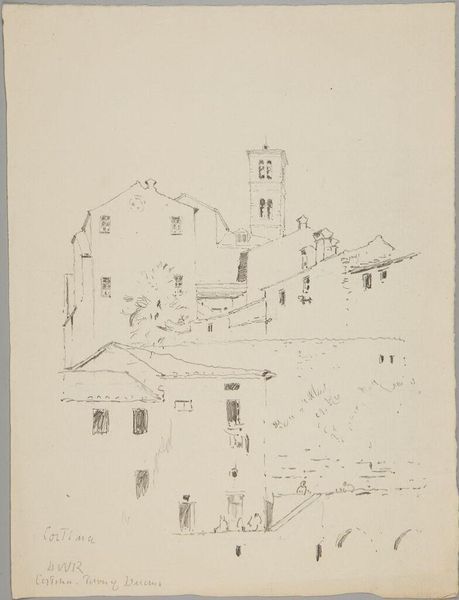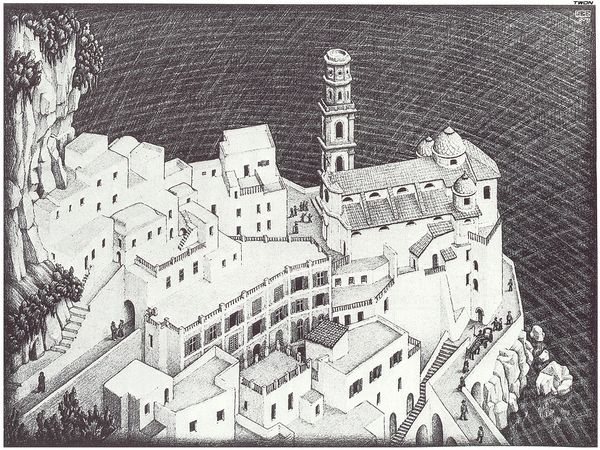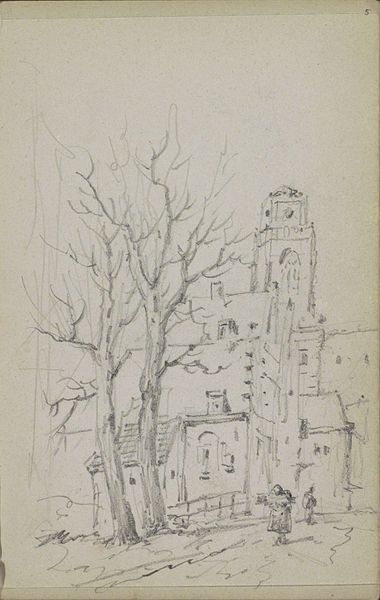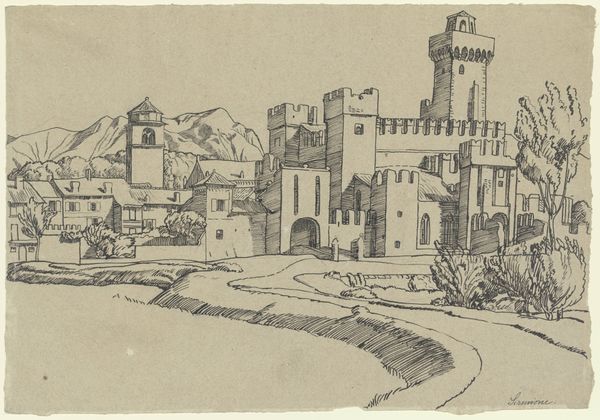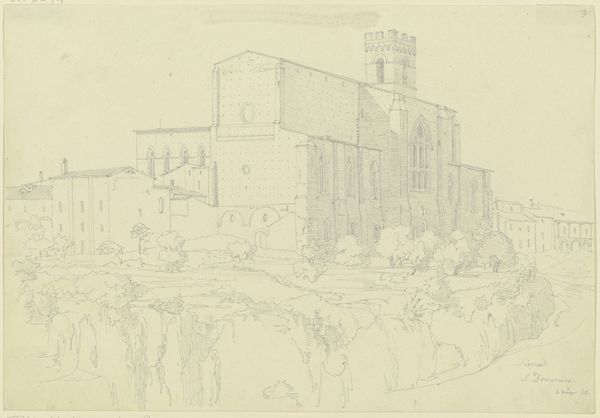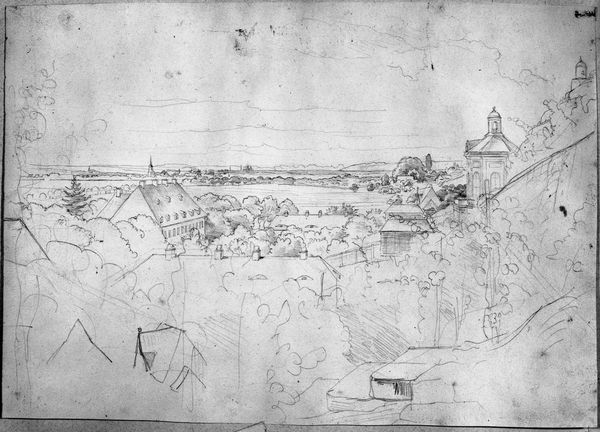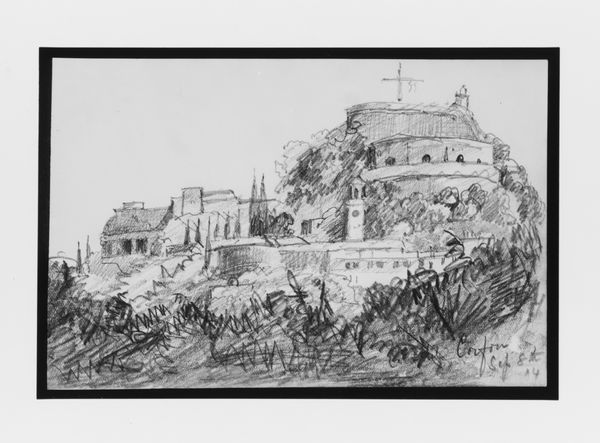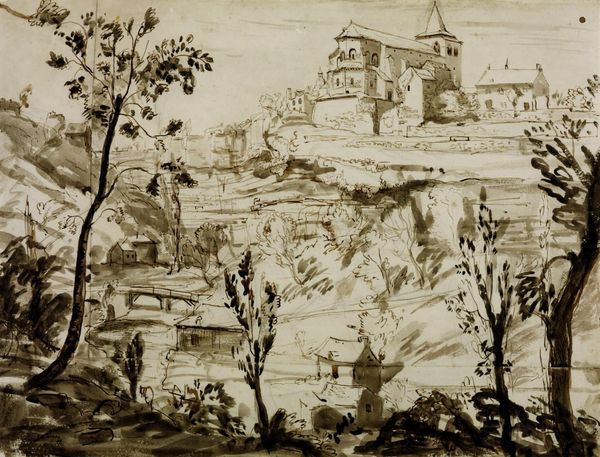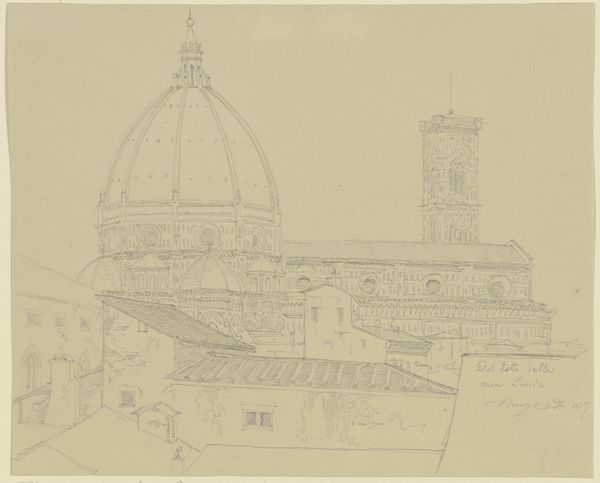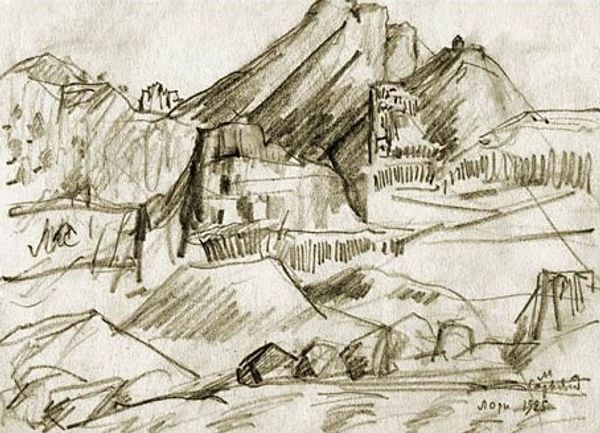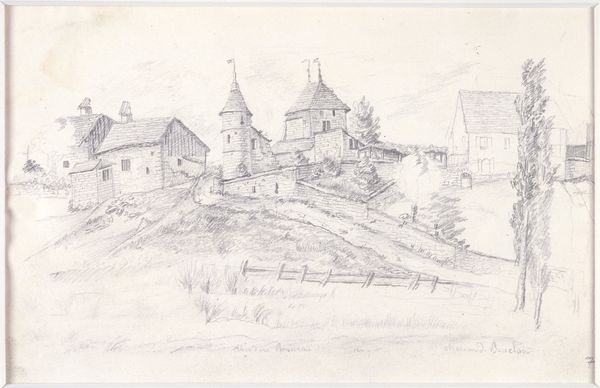
drawing, pencil
#
drawing
#
amateur sketch
#
cliff
#
quirky sketch
#
pen sketch
#
pencil sketch
#
incomplete sketchy
#
landscape
#
house
#
personal sketchbook
#
rock
#
plant
#
sketch
#
pen-ink sketch
#
pencil
#
sketchbook drawing
#
cityscape
#
botany
#
sketchbook art
#
initial sketch
#
building
Dimensions: 30 x 37.8 cm
Copyright: Public domain US
Curator: Look at this understated work: "Sienna. The urban landscape." A sketch made by Pyotr Konchalovsky in 1912. Editor: It feels more like a memory than a depiction. A ghost of a city in pencil and ink. What grabs me first is the stark contrast. Those heavy, dark lines defining the foreground against the lighter, sketchier details further back. Curator: It’s interesting you see it that way. I see a distillation, a visual code. Notice how the spire of the cathedral, almost childlike in its rendering, pierces the skyline. Towers were a critical element of Medieval Italian cityscapes, weren't they? Think of civic power, wealth, and the heavenly aspirations of the people. Editor: Absolutely. And those hastily rendered houses clinging to the hillside - a visual shorthand for the social structure itself, layered and compressed. One imagines the labor, the toil required to shape the landscape into something habitable, to extract resources for building... The materiality of the city condensed into these hurried marks. Curator: It’s as if he’s hinting at the psychological landscape as much as the physical one. The use of the sketch form creates a sense of immediacy, intimacy – we are seeing the artist's thought process, and can almost feel how the towers stood as landmarks over centuries past as though in an incomplete sketch. Editor: Right, a fleeting moment captured with the simplest of tools. It raises questions for me: what paper was Konchalovsky using? How did its texture influence the marks he made? The type of pencil—how did its lead’s hardness impact his stroke? Did he create this 'en plein air', capturing how light changed from one time to the next? Curator: Well, thinking of materials, pencil allows for a beautiful nuance—erasures, blending, and alterations of strokes give this landscape an airy quality that is simultaneously firm. Also, looking closely, don't you see how he juxtaposes botanical symbols on either side as gatekeepers into a city as a symbol? One side features what looks to me like lilies, and another side an odd shape—almost resembling a testicle—which might symbolize different aspects of city life and cultural values or natural barriers or the way forward into social cohesion! Editor: I am very much enjoying this interpretation and, personally, I feel that, in these rapid lines and simplified forms, we glimpse both the physical essence and the enduring spirit of Siena. It shows labor transformed and represented using pencil and pen to represent city views. Curator: I see it too! It really is interesting to understand how art uses lines to convey powerful stories in its incomplete landscape representations.
Comments
No comments
Be the first to comment and join the conversation on the ultimate creative platform.
